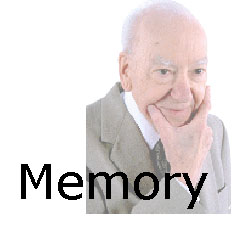
It would seem that 1,000,000,000,000,000 organized neurological connections in of the brain would be sufficient to provide for memory of a lifetime. But research has shown that is far too small a number, especially when all of the neurons that form the connections are doing other tasks. Recent discoveries have shown that memories, skills and learned abilities are not just functions of an alternating and constantly changing electrical network like a computer chip, as science first believed. But instead, they are written in electrical code in the minute electrical differences of individual molecules that form each of the billions of neurons in the brain.
Memory takes place by encoding records of experience by means of the phosphorylation of the molecules that compose the structure of brain cells. This means that a code the describes all of the memories of mankind exists. And this code is written into the molecules themselves. The code is somehow selectively translated to call up particular memories:
"Taken together, these findings suggest that the most likely unit of information storage during learning is not the neuron itself, but rather the molecules that comprise it."
Clark, Gregory A. and Hawkins, Robert D., 1988. Learning and the Single Cell: Cellular Strategies for Information Storage in the Nervous System," Brain Structure, Learning and Memory, Ed. Davis, Joel L., Newburgh, Robert W., and Wegman, Edward, J. (Heckman Bindery, Manchester, Indiana) 1988, p. 24.
So, memory is not just an arrangement of neuron switches (as a computer), but a direct interaction with trillions upon trillions of individual molecules that are sequentially altered in such a way as to preserve the memory in code.
 Do you remember a first kiss? Do you remember holding your baby? Do you remember your elementary school teachers, or that cold crisp day so many years ago when all was right with the world? How is it that you can strike upon these memories instantaneously, no matter how long ago they were first recorded? What tracking mechanisms have been installed to enable you at the whim of a thought to locate the precise molecules that hold the memory requested? What tracking mechanisms have been installed for you to remember which one came first? When you remember a sequence, you are remembering which one occurred in which order.
Do you remember a first kiss? Do you remember holding your baby? Do you remember your elementary school teachers, or that cold crisp day so many years ago when all was right with the world? How is it that you can strike upon these memories instantaneously, no matter how long ago they were first recorded? What tracking mechanisms have been installed to enable you at the whim of a thought to locate the precise molecules that hold the memory requested? What tracking mechanisms have been installed for you to remember which one came first? When you remember a sequence, you are remembering which one occurred in which order.
Where are these memories? How do you find them? What magnificent design can encode sensory perceptions of thought and logic into particular molecules - and then index them for instant retrieval?
No one knows how this occurs.
But science has discovered that the memories are timestamped ( see http://www.sciencedaily.com/releases/2009/10/
091019162921.htm). But in order to be timestamped the brain must have an organic clock. Does it have a clock? Yes it does. That is how many people, perhaps you, can wake up at 7:00 am each day without an alarm.
Evolution has a really excellent explanation for how trillions and trillions of molecules somehow become encoded with a non-physical digital code that records all retrievable human memories and how the brain has its own clock.
"It is nothing short of spectacular that so many mutations in so many genes were acquired during the mere 20-25 million years of time in the evolutionary lineage leading to humans, according to Lahn. This means that selection has worked “extra-hard” during human evolution to create the powerful brain that exists in humans.
It is perhaps the complex social structures and cultural behaviors unique in human ancestors that fueled the rapid evolution of the brain."
Lahn, Bruce T., Human Evolution and Stem Cell Biology, as quoted in the Howard Hughes Medical Institute website http://www.hhmi.org/news/lahn3.html
So, evolutionists explain that it was "selection" (natural selection) working "extra hard" that created the brain of the human over the course of 20 - 25 million years. What is the rate of evolution that would evolve a trillion neurological connections in 25 million years?
That rate calculates out to be 109589 fully developed, perfected and installed neurological connections every day for 25 million years, or a little faster that one per second. That is indeed a spectacular rate and Mother Nature must have working really hard. But she had a quota, of course; she had to complete everything by 1859 when Darwin first published his imaginings which has now become a universal lie. It is also an impossible rate and there is no "Mother Nature." Mother Nature, the Santa Claus of Darwinism, did not create human beings. The Creator created human beings. Evolution is supposed to have occurred by generations, not by days, and by fits and errors, not by perfected installed changes.
The rate of evolution of the perfected neurons does not begin to approximate the theorized rate of evolution of the method for encoding memories into the arrangement of altered molecules.
Other studies show that memories are written into phosphorylised molecules of the brain's neurons. Hence, there must be mechanism to locate the "blank" molecules that do not have a previously encoded memory and then phosphorylising them into a pattern or code that can be read at a later time - an electrical code that can recreate each memory. Where did that code come from? Where did the timestamp come from?
A particular memory trace must begin with a particular molecule (or perhaps a group of molecules). And that memory trace must have a termination point that is defined by a molecule (or group of molecules). So, in order to retrieve this memory, there must be a mechanism that can locate the molecule at the commencement of the memory trace and locate the following molecules and read the code that is inscribed into them and then recognize the end of the memory trace. It is inconceivable that a mechanism that can somehow locate a particular molecule or group of molecules in trillions of similar molecules simply "happened" as a result of random beneficial mutations and dying animals.
That argument is ludicrous. We are talking about a molecular size electrical mechanism using an unscripted logical code to find - instantly and on demand by simple thought - something as small as a leaf in a forest that is half the size of the United States. We are talking about a neuro-net that requires 109,321 miles (around the world more than 4 times) of molecular size wiring carrying millions coded messages crammed into the space of a human skull. That just did not happen by a series of fortunate mutations.
The emperor has no clothes!
These concepts call to mind the often quoted statement of K.S. Lashly in 1950 relating to his studies of the memory trace of a mollusk remembering danger and reacting to a threat:
This series of experiments has yielded a good bit of information about what and where the memory trace is not. It has discovered nothing directly of the real nature of the engram. I sometimes feel, in reviewing the evidence on the localization of the memory trace, that the necessary conclusion is that learning just is not possible. It is difficult to conceive of a mechanism which can satisfy the conditions set for it. Nevertheless, in spite of such evidence against it, learning does sometimes occur.
Lashly, K.S., 1950. In search of the engram,Symposium of the Society of Experimental Biology, No. 4, 454-482. New York: Cambridge University Press.